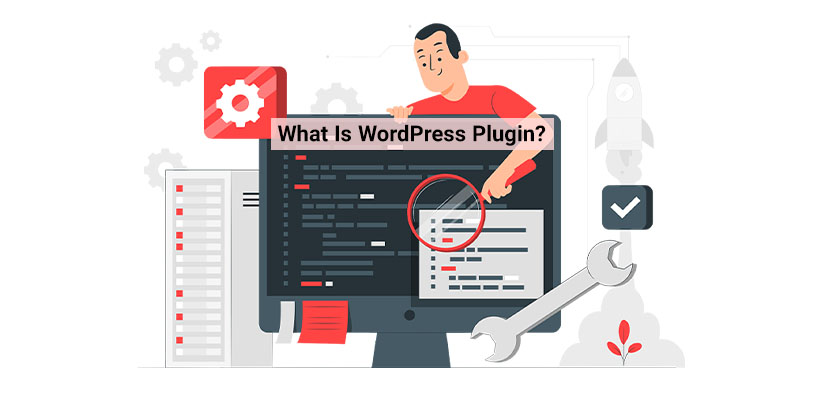
All the way from simple blogs to complex web portals and corporate websites, they all run on WordPress. In actual fact, more than 40 % of all websites are built using this open-source Content Management System (CMS).
The reason WordPress has gained popularity is its user-friendliness and versatility. WordPress offers standard features that allow anyone to have a website online in a matter of time.
You can create posts as well as pages, schedule and manage content, assign roles to users, upload and upload images and other media and manage comments directly out of the box.
Let’s say that you’ve done all that and would like to keep building your website by making your login page more customized or adding social evidence to your posts and pages, for example. Because WordPress is open source, you can extend or alter the code to build almost all the features your site requires. This flexibility is a major attraction to WordPress developers.
But what happens if you’re a programmer and have no knowledge of programming? If that’s the scenario, you could use an application. So, you may ask, “Do I need a plugin for WordPress?”. In this article, we’ll discuss what is a plugin for a WordPress website and introduce some of the best WordPress plugins you must have on your website.
What Is a WordPress Plugin, And How Does It Work?
A WordPress plugin is simply an element made of software that “plugs in” to your WordPress hosting. In terms of human language, this implies that a WordPress plugin gives you new features for your WordPress website or expands the existing functionality of your website. The features added to your WordPress website depending on the types of plugins in WordPress that you have installed.
One of the many benefits of using WordPress is that innovative developers have developed tens of thousands of WordPress plugins that you could integrate into your site.
Plugins can do all kinds of tweaks, from tiny adjustments to major modifications to your website. For instance, certain plugins could transform your WordPress website into an online store, social networking site, or even a forum.
They can also include smaller features to your custom WordPress web design, such as the Instagram feed. Certain WordPress plugins do not even include front-facing effects. You can, for instance, install plugins that can improve your site’s performance or help improve its ranking on search engines such as Google.
How Do Plugins Work?
All of this will be explained in greater detail later on. In general, before you can begin using WordPress plugins for your site, it is necessary to:
- Find the WordPress plugin you’re interested in
- Install this plugin on your WordPress website.
- Install the plugin from your WordPress dashboard
Can You Use WordPress Plugins at WordPress.com?
For the majority of people, the answer is “No”. You are not able to make use of WordPress plugins on WordPress.com. As mentioned above, in order to install a plugin, you need to buy WordPress web hosting. Plugins, in general, are a feature that only those who use the self-hosted WordPress, AKA WordPress.org, are able to benefit from.
Recently, Automattic slightly tweaked this policy, allowing WordPress.com Business Plan customers the ability to use third-party plugins. However, the average WordPress.com user is not able to download their own extensions.
How to Install WordPress Plugins from the Official Plugins Directory
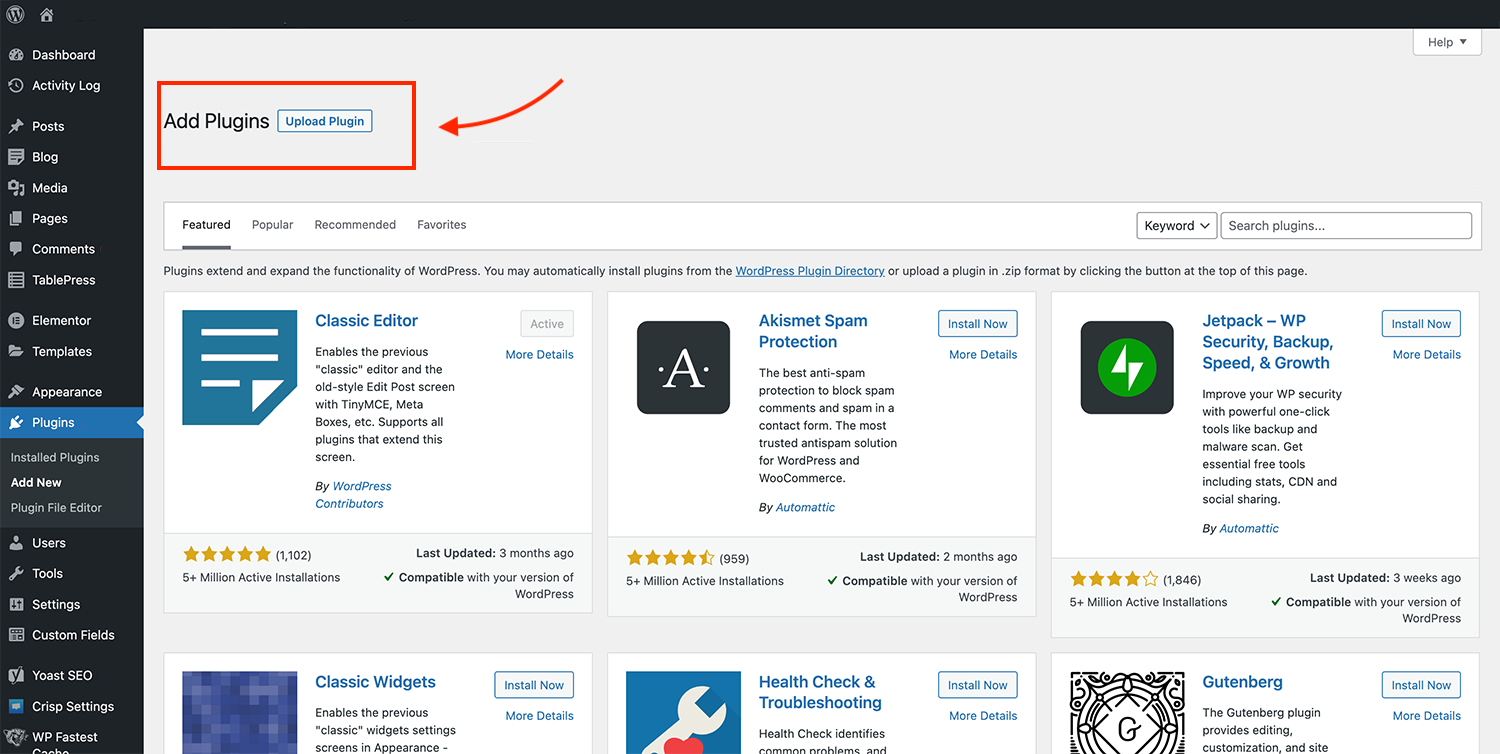
Now that you know what is a plugin for a WordPress website it’s time to install WordPress plugins. The easiest method of installing WordPress plugins is by logging into the official plugin directory via your WordPress administrator area. However, this WordPress Directory of plugins is restricted to plugins that are free.
Log into your WordPress dashboard and go to Plugins and then Add New. By default, you should be able to see examples of plugins that are popular. You can also search for the title of the plugin using your search box.
Let the process end, and then hit the activate button to begin using WordPress. WordPress plugin.
After you have activated the plugin, you can set the settings of the plugin through Plugins and then Plugins that are installed.
How to Install WordPress Plugins Manually
Another method to install WordPress plugins is manually uploading plugin files via the dashboard of your WordPress dashboard.
This allows you to install a plugin that might not be listed in WordPress’ official directory. WordPress directory, but it is available through third-party directories like ThemeForest.
Before beginning the installation process, it is necessary to install the plugin zip file from the source.
After that, log into your WordPress administrator area and then select Plugins. Click Create New. Find your Add Plugin button located at the top left of the screen.
Choose the zip file on your computer which you would like to upload, and then select install it now.
The plugin installation process will take a while to be completed, and press to activate the plugin. This method is preferred for custom WordPress web designs.
What To Consider Before Installing WordPress Plugins
Since the installation of a WordPress plugin involves adding an external code to your WordPress website, you have to be cautious about the software you choose to install.
The incorrect plugin may:
- Make an error in your website
- Create a security hole that could compromise your WordPress website’s security
- Your site may be slowing down
- It is a deliberate attempt to introduce harmful code
To avoid these issues:
- Make sure to install plugins from trusted directories or developers (like WordPress.org as well as Code Canyon)
- Read reviews and determine the popularity of a plugin before you install it.
- Verify the date the plugin was upgraded to ensure that it’s being maintained.
Although this method isn’t 100% absolute, it does go far in ensuring that you install only the best WordPress plugins.
How to Deactivate a WordPress Plugin
Similar to installing and updating a WordPress plugin, we have a specific article to help you remove and deactivate the WordPress plugin.
The process is straightforward and is done through the WordPress dashboard.
Can You Have Too Many WordPress Plugins?
As you get more familiar with WordPress, you’ll likely see individuals telling you not to install excessive WordPress plugins to keep from “slowing your site down.”
The notion that more WordPress plugins mean a slower site isn’t true…but it’s still an important concept for novices to remember.
What’s more important than the sheer amount of WordPress plugins is the function each plugin performs and how well it is designed.
As a newbie, you probably lack the technical knowledge to determine the effect of each plugin.
This is why it’s recommended to only install plugins that are essential to your needs. This means don’t install a random plugin basis simply because you think it’s cool. Keep your list of plugins to the essentials!
Best WordPress Plugins
WordPress provides the essential capabilities to allow you to publish visually rich content as soon as you can to reach your viewers. But, it lacks some important features to attract and keep them coming back for more. These types of plugins in WordPress will help you improve your content, boost your website and landing page, and improve your conversion strategy, as well as keep visitors returning.
1. All-in-One SEO
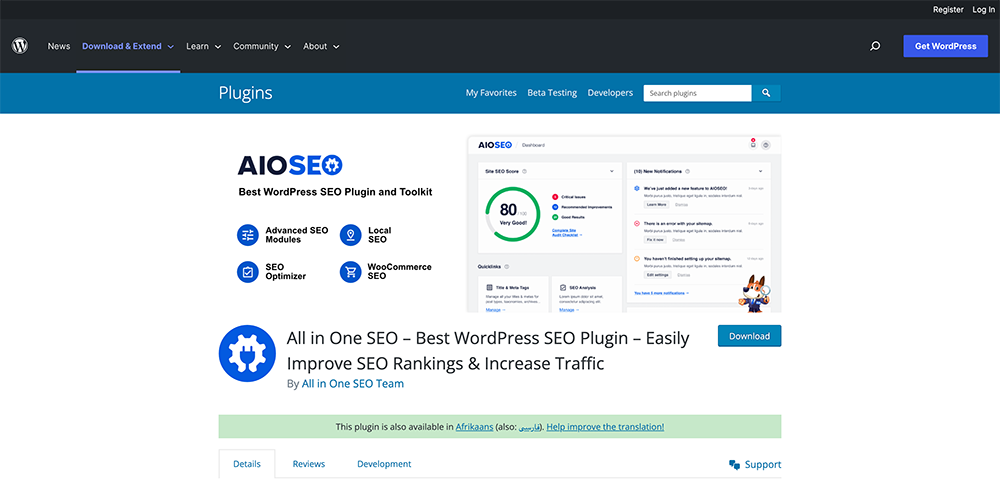
The All in One SEO (AIOSEO) is a full SEO plugin and toolkit that works with WordPress. More than 2,000,000 professionals utilize this plugin to increase their site’s search engine rankings and increase traffic. Start with your WordPress SEO set-up wizard that helps you choose the most effective SEO settings for your website and your industry.
In less than 10 minutes, you’ll easily implement advanced SEO options like XML sitemaps as well as optimized search appearances, search engine optimization keywords, schema markup, and more. Additionally, an SEO checklist will review the entire website for any errors and give you actionable tips to improve your site’s SEO.
AIOSEO has a free as well as a premium edition of their plugin. The free version comes with everything you require to boost the SEO of your website. Premium versions come with additional useful features, such as redirection management and 404 error tracking, as well as an SEO for images module.
2. Yoast SEO
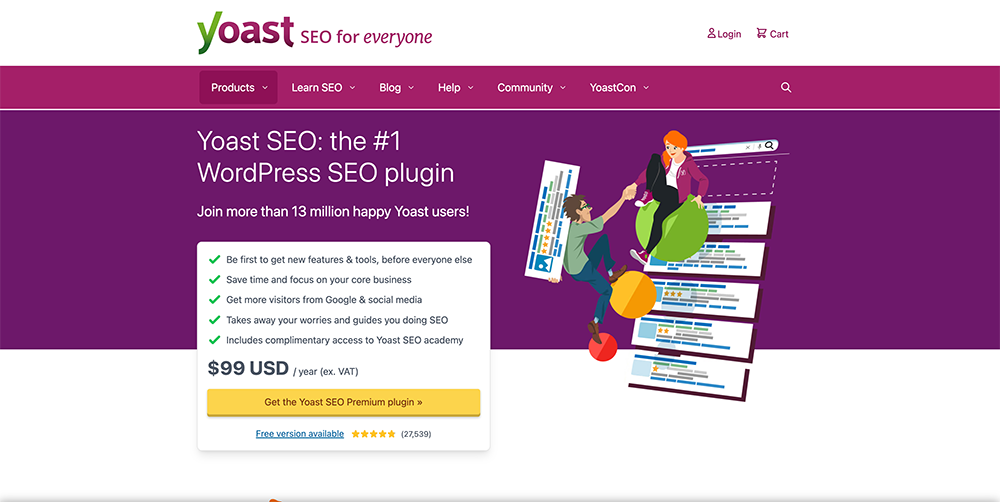
Simply publishing high-quality content isn’t enough – you need to make it search-engine friendly to rank it and draw new users. Yoast SEO is a plugin that has been created to assist you in improving the quality of your page’s SEO to bring more visitors to your website.
You can create the perfect title and enhance your featured snippets or rank for certain keyword phrases; Yoast’s robust range of functions that includes a snippet preview tool, internally linked tool SEO analysis, and readability helps automate and simplify the process of optimizing your site for you.
There’s a paid and free edition of the plugin. The premium version has additional features, like the ability to redirect users and automatically generate internal link suggestions. With more than 135 million downloaded, this is among the most popular SEO plugins.
3. WP Rocket
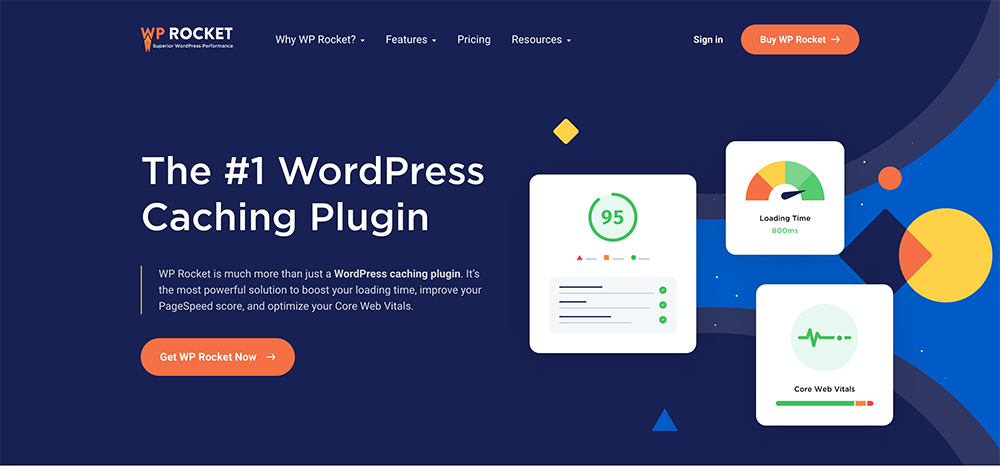
WP Rocket is a highly efficient caching plugin that provides an extensive array of options, such as cache preloading, removal of unneeded CSS and delay in JavaScript execution, and lazy loading to accelerate the performance of your WordPress website. What sets WP Rocket apart from other speed optimization plugins is the fact that it starts working from the beginning once it is installed and activated on your website.
4. Wordfence Security
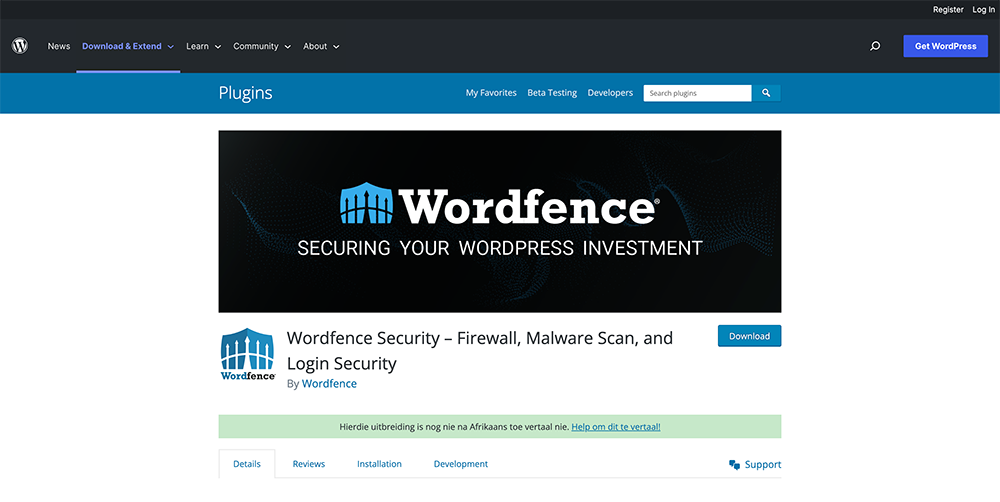
Wordfence is among the complete WordPress security options available. It has a malware detector that quickly informs you of security concerns and an endpoint firewall that helps stop attacks against your site. It also offers real-time monitoring of hack attempts and traffic on your website, as well as two-factor authentication. It is among other options to safeguard your site from hackers.
There’s a premium and free version. The premium version has additional features like real-time firewall rules and malware signature updates, as well as IP blacklists. With more than 3 million active users, Wordfence Security is the most well-known WordPress Security scanner and firewall.
5. Elementor

If you’re not a programmer, however, you can still build the WordPress website of your dreams with a page builder plugin such as Elementor. Elementor is a drag-and-drop visual page builder that comes with modern design tools. It lets you pick from a wide range of templates and then modify them using Elementor’s mobile editing tools to make stunning and user-friendly pages. Elementor includes a variety of widgets, so you can quickly add buttons, images, headlines, carousels, and buttons, as well as other elements, onto your pages. It’s free, but it is possible to upgrade your version for more templates as well as widgets, animations, effects, and many more.
6. UpdraftPlus
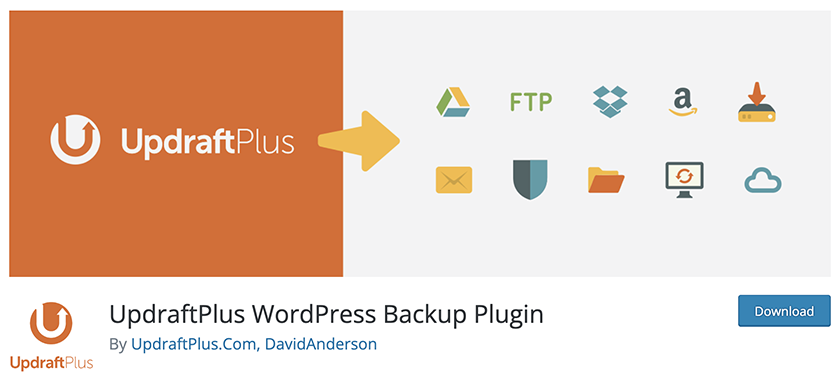
With UpdraftPlus, it is no longer necessary to fret about manual backups ever again. This tool allows you to back up your files directly into Dropbox and Google Drive, among other cloud-based platforms, and then restore them with just a click. This means that if the time arrives when your website is compromised, your server fails, or something goes wrong during an update; you’ll know that your site and the associated files and databases are safe. There’s both a premium and free version of the software available. UpdraftPlus Premium gives you more cloud storage options, such as OneDrive and Azure, and includes additional features, such as incremental backups as well as encryption of databases. With over two million active installs, it is the most popular scheduled backup plugin.
Conclusion
We hope this article has taught you how to integrate plugins into WordPress. There is a way to increase the functionality of your website even in the absence of any previous technical expertise or knowledge.
If you’re not sure which plugin to choose, think about what features your website’s capabilities are lacking. Take a look at available plugins and consider elements like compatibility reviews, compatibility, and the last update.










Leave a Reply